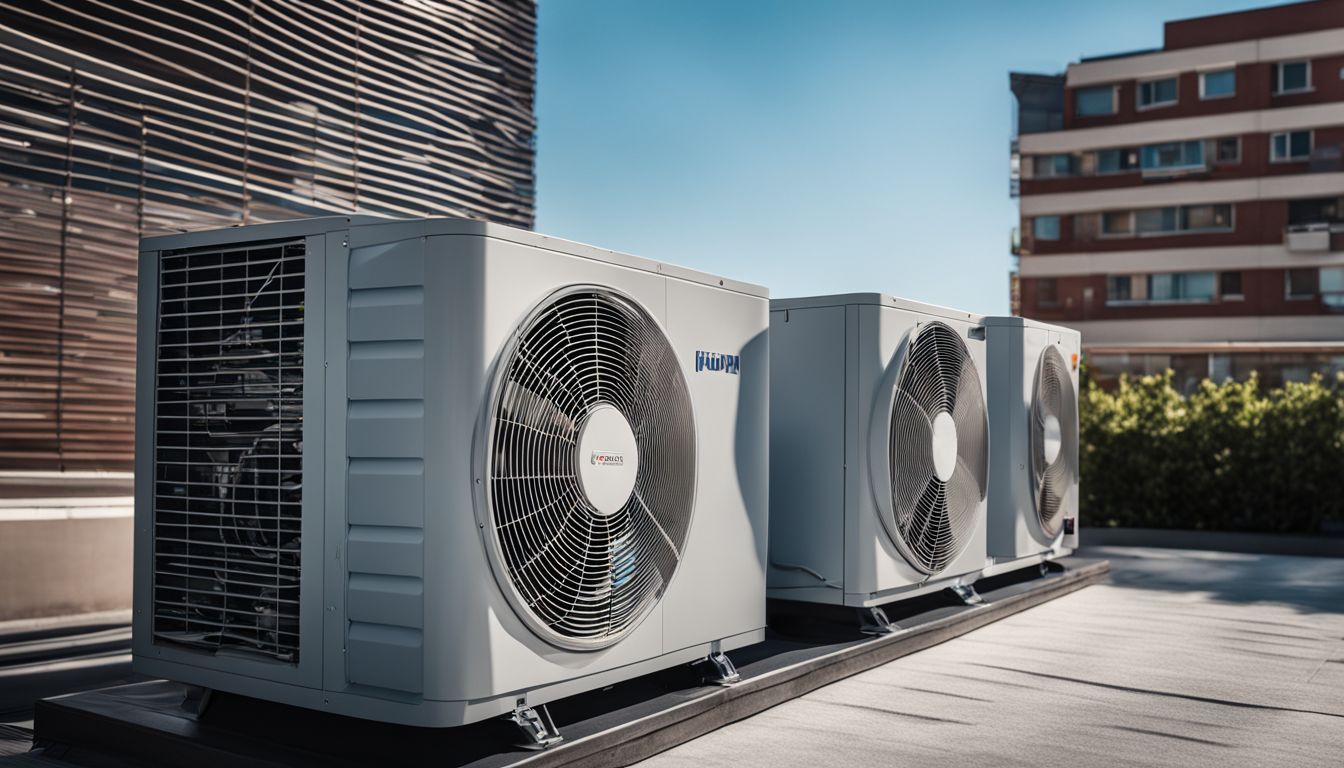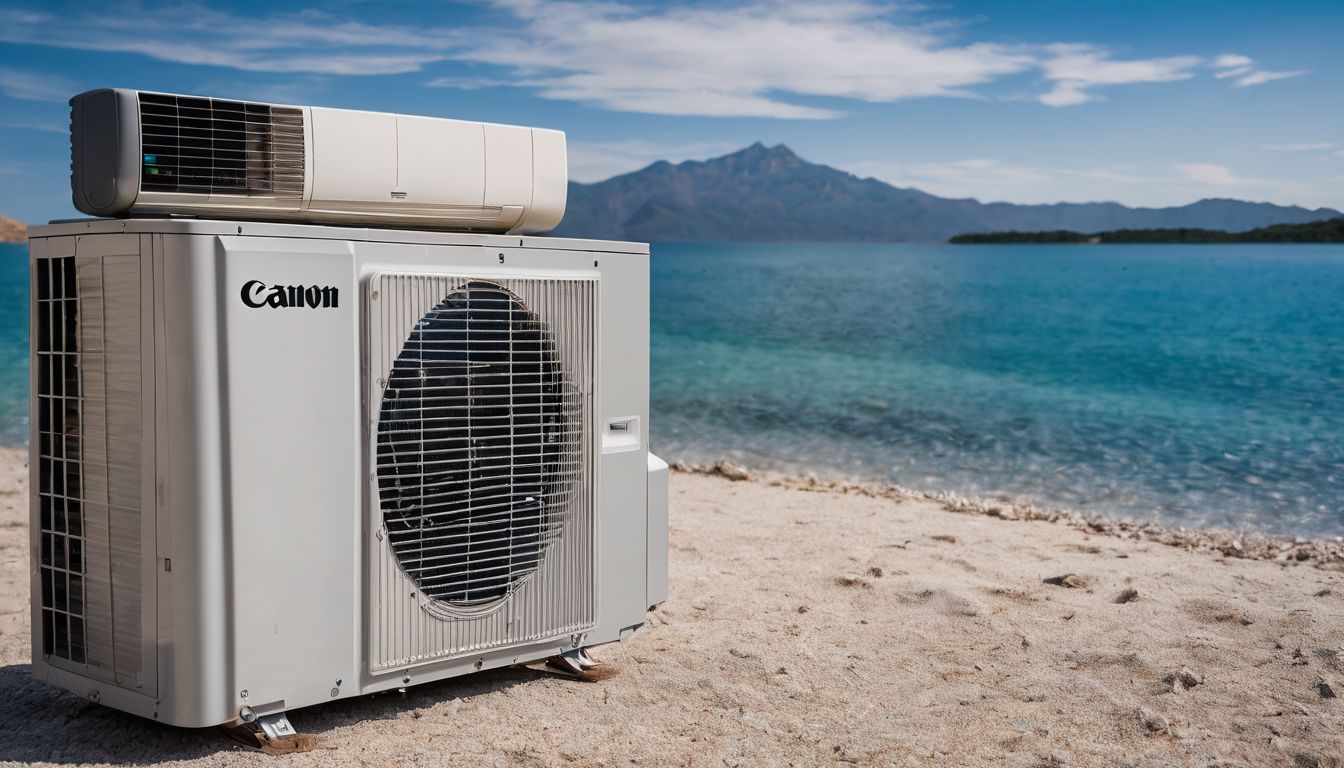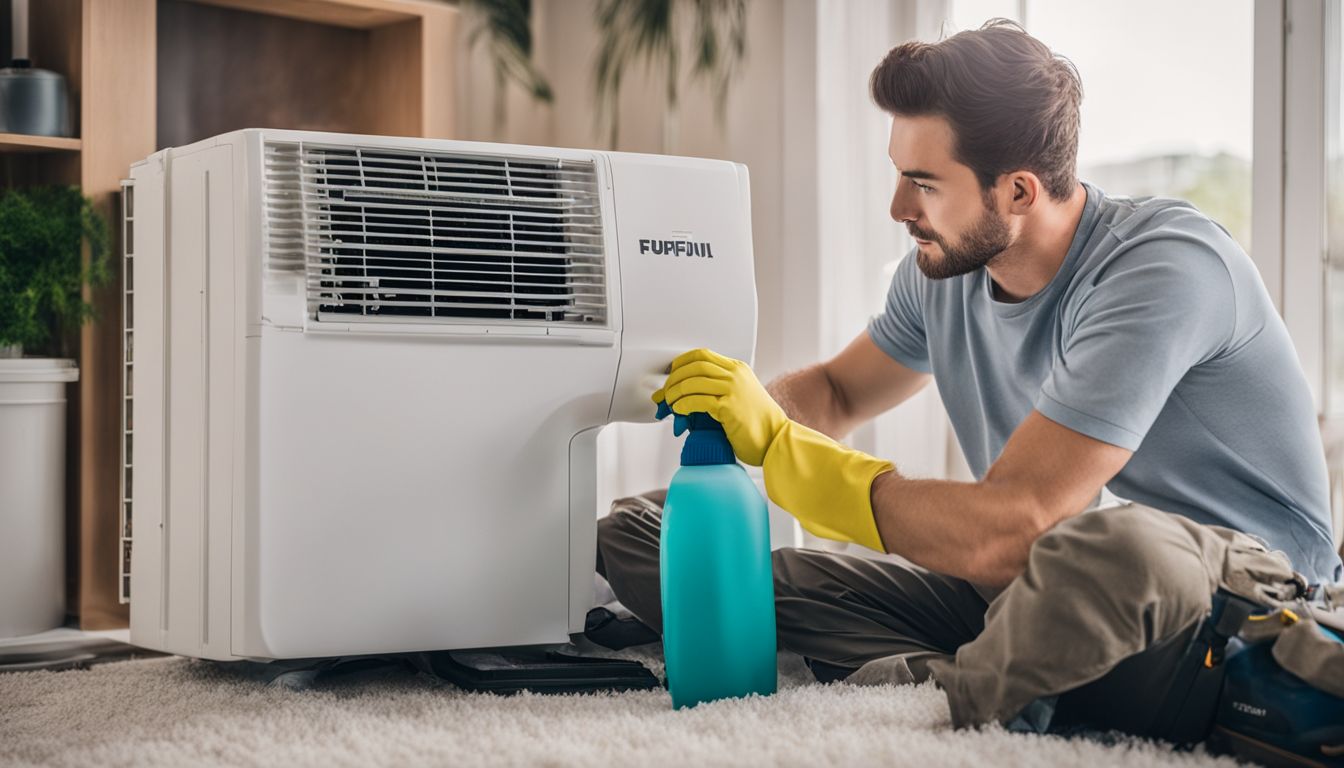Have you ever wondered how your air conditioner keeps you cool in the scorching heat? Air conditioning has revolutionised our comfort at home and work. Our guide will simplify cooling terms so that you can make informed decisions about your daily cooling needs.
Get ready to chill as we break down the essentials!
Understanding the Principles of Cooling
Cooling essentially revolves around moving heat from one place to another, following the basic laws of physics. Heat naturally flows from warmer objects to cooler ones until there’s no longer a temperature difference between them.
In cooling systems, this process is fast-tracked using various methods and technologies. As heat is absorbed by a refrigerant within an air conditioning system, it changes from a liquid state to a gaseous state—a fundamental part of the refrigeration cycle that keeps our homes and offices cool.
Refrigerants play a key role in transferring heat energy outside. They circulate through coils and absorb indoor warmth; once they carry this heat outdoors, it dissipates into the air or water systems designed for that purpose.
This cycle repeats continuously as long as the cooling system is on, ensuring spaces stay at comfortable temperatures while maintaining impressive energy efficiency levels due to advancements like Low-E coatings and thermostatic expansion valves (TXVs).
Insulation furthers these efforts by slowing down unwanted heat transfer, thus keeping cooled areas at desired temperatures with less work required from compressors or condenser coils.
Everyday Cooling Terms Explained

Understanding the jargon of cooling technology can sometimes be daunting, but it’s crucial for grasping how we maintain comfortable temperatures. We delve into common terms that pop up when discussing heat exchange and climate control systems, providing clear definitions to demystify the language of everyday cooling.
Convection, Radiation, and Perspiration
Convection plays a vital role in cooling our bodies. As hot air from our skin rises, cooler air moves in to take its place, sweeping away the warmth and aiding in temperature regulation.
This process is similar to how a breeze cools you down on a warm day; the movement of air increases heat absorption from your body into the environment.
Our bodies also emit energy through radiation. Just like the sun radiates warmth to us, we release infrared radiation which helps lower our body temperatures without needing direct contact with another surface or substance.
Coupled with this is perspiration—the natural response to overheating. Sweat evaporates off our skin, taking excess heat with it and leaving us feeling cooler as blood circulation nears the surface of our skin ramps up to dispatch internal heat outward effectively.
These mechanisms work tirelessly together, ensuring we maintain homeostasis even when external temperatures climb.
Sensible, Latent and Total Cooling
Sensible cooling is key to making our homes and office spaces feel comfortable by lowering the air temperature. It’s what happens when your air conditioning system works to reduce the warmth you can feel.
This type of cooling takes up about 80% of an air conditioner’s total capacity, focusing on changing the temperature without altering moisture levels.
Latent cooling, on the other hand, tackles humidity by removing excess moisture from indoor air. This process plays a huge part in creating that crisp, refreshing atmosphere during hot summer days.
Combining both sensible and latent effects leads us to total cooling load – this is essentially how HVAC systems are designed to manage climate control effectively within a space.
They evaluate both heat energy removal and dehumidification needs for optimum comfort and efficiency.
The Crucial Role of Refrigerants in AC Units
Refrigerants are the lifeblood of air conditioning systems, circulating through pipes and coils to keep our homes and offices cool. They work by absorbing heat from the indoor air; this is essential for creating comfortable living spaces in hot weather.
Inside an AC unit, refrigerants continuously convert between liquid and gas states as they move heat from one place to another.
In an air conditioning evaporator, refrigerants draw in warmth from the surrounding area, become low-pressure gas and then flow towards condensing coils. Here, they release absorbed heat into the outside air before returning to their original state.
This cycle is fundamental for effective climate control within buildings. Efficient energy use hinges on having a faultless refrigerant system that can quickly adapt to changes in temperature demands without leaking or causing harm to the environment.
The Role of Cooling Systems in Daily Life
Cooling systems have become essential in managing temperatures for comfort and safety in our homes, workplaces, and public spaces. On sweltering days, air conditioners keep interiors cool and liveable by transferring heat from the inside out.
They ensure food stays fresh longer by maintaining optimal storage conditions in refrigerators and freezers, directly influencing daily nutrition and food costs.
Such systems also support a range of industries where precise temperature control is crucial. Data centres rely on cooling to prevent overheating which can damage servers and disrupt services.
In healthcare settings, chillers contribute to preserving medications at stable temperatures to retain their efficacy. With energy-efficient technology advancing, cooling systems are now geared towards more sustainable lifestyles while meeting the ever-growing demand for thermal comfort across different climates.
Conclusion
Discovering the world of cooling terms transforms how we view everyday encounters with air conditioners, cold rooms, and even our bodies regulating temperatures. We’ve unpacked everything from convection to refrigerants, making sense of complex principles with straightforward explanations.
These insights not only enlighten but also empower us to choose environmentally friendly options and save on energy costs. Embrace what you have learned; apply it to select the most effective appliances or fabrics that keep life comfortable regardless of rising mercury levels.
Remember, every action towards more efficient cooling contributes to a larger global effort against climate change. Equip yourself with this knowledge and confidently manage your personal spaces for optimal coolness all year round.
To delve deeper into how refrigerants keep your home comfortable, read more about the crucial role of refrigerants in AC units.
FAQs
1. What does ‘energy efficient’ mean in cooling systems?
Energy efficiency in heating, ventilation, air conditioning and refrigeration (HVACR) means the system uses less power to cool or heat, saving energy and lowering bills.
2. Can you explain what ‘subcooling’ is?
Subcooling occurs when a liquid is cooled below its boiling point without changing into a gas; it’s key for making refrigerants like R507 work better in systems like air conditioners (A/C).
3. What role do heat pumps play in cooling our homes?
Heat pumps move warmth from inside your home to outside during summer, working like an A/C unit but can also warm up the place by reversing the process when it gets cold.
4. Why should I care about ‘wet bulb’ and ‘dew point’ terms?
Understanding wet bulbs and dew point helps figure out how much moisture is in the air; crucial for setting up dehumidifiers right so they keep rooms comfortable without overworking.
5. How do evaporator coils help with cooling down spaces?
Evaporator coils carry a coolant that absorbs heat from the air as it turns from liquid to gas, helping things like fridges and A/Cs make ambient air cooler.
6. What’s special about ‘liquid nitrogen’ used in some cooling processes?
Liquid nitrogen is super cold at -196 degrees Celsius, often used to freeze foods quickly for storage or create vapour effects because it changes fast from liquid to gaseous states when exposed to normal temperatures.





